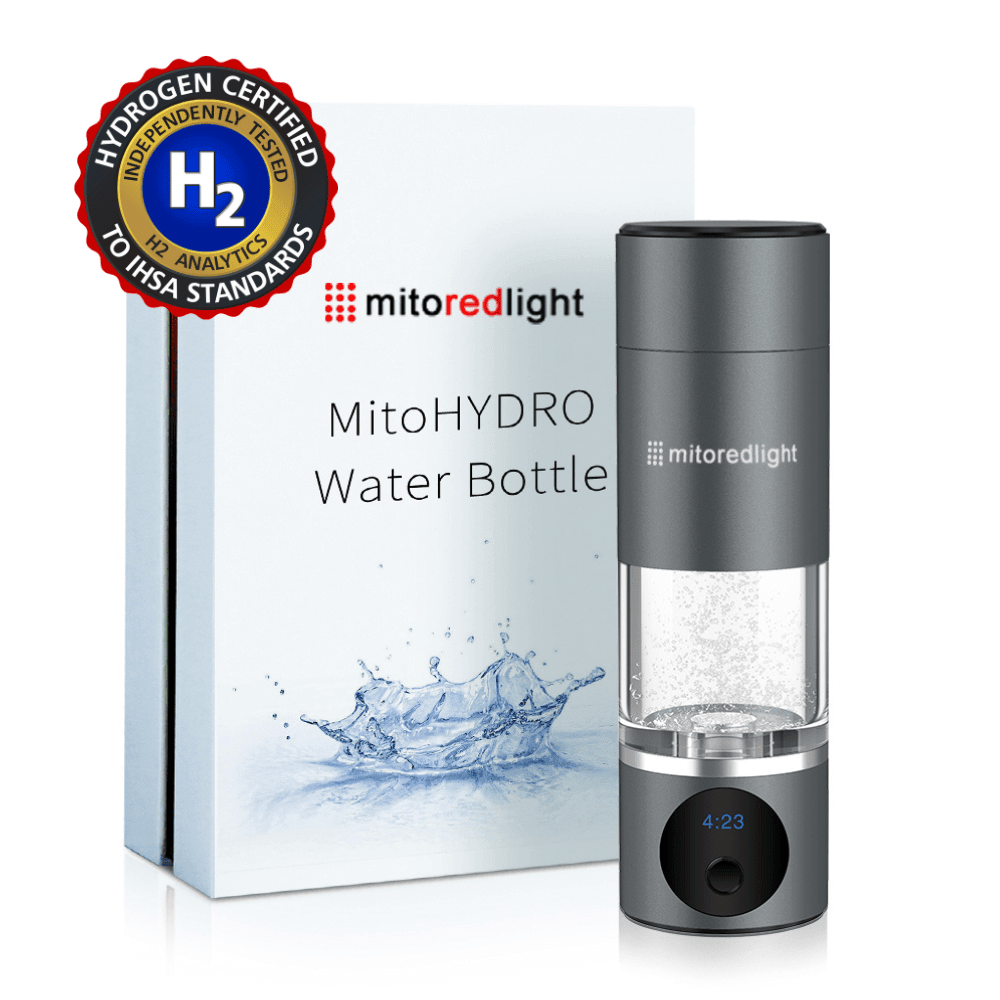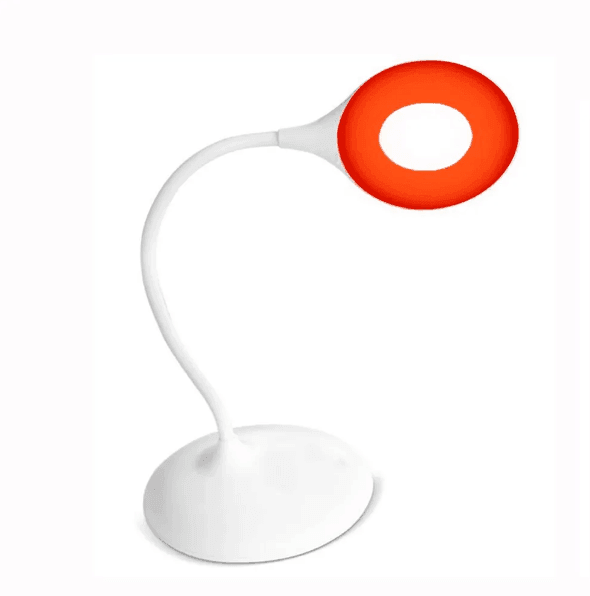DISCLAIMER: Mito Red Light devices are Class II wellness devices aimed at affecting the body through topical heating and supporting cellular function. The information provided in this article and on this site is for educational purposes only and is not intended to imply effectiveness of Mito Red Light devices for any specific application. The information provided in this article and on this site is not intended to diagnose, treat, cure, or prevent any disease, is not a substitute for consultation with a licensed medical provider and should not be construed as medical advice. Click here to read our article on potential contraindications of red light therapy..
Executive Summary
This Mito Red Light article explores the potential of red light therapy (RLT) as a non-invasive adjunct treatment for depression. Depression, a common mood disorder linked to brain chemistry, may find support through RLT's ability to stimulate cellular mitochondria using red (620-700 nm) and near-infrared (NIR, 700-900 nm) light. Emerging research suggests NIR light can penetrate the skull, potentially benefiting brain cells and mood. Regular RLT routines may support overall mood, aid brain recovery after injury, and enhance cognitive function by promoting neuroplasticity. At-home devices like the MitoMIND™ Helmet offer a convenient way to explore these benefits. While not a replacement for traditional treatments, RLT presents a promising complementary approach to mental wellness.
Key Takeaways:
- Red light therapy shows potential as a supportive treatment for depression.
- It may work by stimulating brain cells and improving cellular function.
- Research suggests benefits for mood, brain injury recovery, and cognition.
- At-home devices offer a convenient way to access RLT for mental health.
- RLT can be a beneficial adjunct to traditional depression treatments.
Medically Reviewed by | Heidi Wright, BSN, RN, PCCN
Depression, also known as major depressive disorder, affects over 17 million Americans. It is a common mental illness that affects more women than men and can even appear seasonally in the case of seasonal depression. Although antidepressant medications can dramatically improve the quality of life that someone dealing with depression may have, there are adjunct treatments available that can also offer help in a non-medicated, non-invasive way.
If you or a loved one suffers from a form of depression, you should know you have options. A promising new option using photobiomodulation (or light therapy) has shown promise in improving mood disorders and even supporting cognition and brain health. We’ll talk about what depression is, how light exposure plays a role, and why red light therapy may provide the key to more mental wellness.
What Is Depression?
There are numerous different types of mood disorders, and many that fall under the umbrella of depression. The most common depressive disorders are major depressive disorder, premenstrual dysphoric disorder, seasonal affective disorder, prenatal depression, postpartum depression, and situational depression.
Major Depressive Disorder
Also known as clinical depression, a person who has major depressive disorder will experience feelings of hopelessness and/or sadness for at least two weeks and on most days, along with changes in sleep patterns, eating habits, and social tendencies.
Seasonal Affective Disorder
Also known as seasonal depression or the “winter blues,” this type of depression affects a person only during certain months — usually during winter months when there is less sunlight and the days are significantly shorter. Someone with seasonal affective disorder usually feels better during the spring and summer months.
Premenstrual Dysphoric Disorder
This type of depression may also include symptoms associated with anxiety. It occurs a few days or a week before the menstrual period and clears up after the period is over. Although it seems a lot like premenstrual syndrome, the feelings of sadness, anxiety, and extreme irritation are thought to be so bothersome they interfere with a person’s life.
Prenatal and Postpartum Depression
Both of these types of depression affect women who are either pregnant or who have just had a baby. It’s extremely important to remember that hormonal changes can affect mood, and both pregnancy and childbirth change hormone levels quickly and dramatically.
Situational Depression
Sometimes, depression accompanies other health conditions. It may also occur as the result of the death of a loved one, the loss of a job, or other losses or situations. Typically, this type of depression will eventually resolve on its own once time has passed, but in some cases (like cases of illness), the depression may linger and become clinical.
What Are the Symptoms of Depression?
Depression is more than just feeling sad for a day or so. Someone with depression has symptoms that usually last for more than two weeks.
Most days during these weeks are filled with feelings of:
- Sadness.
- Hopelessness. “People with depression may feel like there is no hope for the future and that things will never get better,” says Heidi Wright, Registered Nurse.
- Irritable and frustrated.
- Loss of joy in things that once brought you pleasure.
- Lack of interest in social gatherings or friendships.
- Too much or too little sleep.
- Changes in weight.
- Fatigue and lethargy.
- Restlessness or feeling slowed down. “Some people with depression feel restless and agitated, while others feel slowed down and sluggish,” notes Wright.
- Feeling worthless or guilty. “People with depression often have negative thoughts about themselves, feeling like they are worthless or failures,” Wright highlights.
- Thoughts of suicide or self-harm.“If you are having thoughts of suicide or self-harm, it is important to seek help immediately,” says Wright.
You may experience one or some of these symptoms, but keep in mind you don’t have to experience all of them to have depression.
What Causes Depression?
The cause of depression is thought to be a chemical imbalance in the brain that alters how brain cells communicate with one another. Neurotransmitters, which send messages to one another to support brain health and cognition, become less able to communicate with each other. Two neurotransmitters, serotonin and dopamine, are the two that are most likely to be involved with feelings of depression.
Depression has its roots in our biochemistry, but it also has a genetic factor. If one or both of your parents suffered from depression, you are more likely to suffer from depression too. Certain medications may also lead to depression, and knowing that depression could be a side effect is important before you start the medication.
Lastly, life events, seasonal changes, and illness can also lead to both depression and anxiety disorders. These are extremely common and usually treatable with medication and/or lifestyle changes and therapy. Your healthcare provider can help you determine the best course of treatment. Now, another form of holistic care is available to offer additional support.
What Is Red Light Therapy?
Red light therapy is part of a system of photomedicine that uses different wavelengths of light to restore the body, rejuvenate the skin, treat physical ailments, address chronic pain, speed workout recovery, improve and deepen sleep, and even help reverse the aging process.
There are two specific forms of red light therapy that are considered beneficial in addressing psychiatry-related issues. Red light, which measures 620-700 nm, and near-infrared light (NIR), which measures 700-900 nm. Both of these forms of light are capable of being beneficial for brain health. This type of therapy also goes by other names, like low level laser light therapy (LLLT), light therapy, and phototherapy.
How Does Red Light Therapy Work?
Both red light and NIR light are considered effective and beneficial for the body. These wavelengths of light penetrate the skin and are able to reach deeper layers of tissue, including muscle and bone. When light hits these tissues, it stimulates the cells that make them up.
Inside each cell, small cellular organs called mitochondria produce adenosine triphosphate or ATP. This is the energy currency used by the cells to carry out cellular processes. When your cells have more energy to perform their duties, they function effectively and support proper function in the tissues, organs, and systems they support.
As we get older, our mitochondria naturally make less ATP. Stimulating them to make more can help us experience total body wellness benefits, and even notice an improvement in depression symptoms.
What Is the Link Between Red Light and Brain Health?
Although research into how red light therapy affects the brain is still emerging, promising new research has prompted health professionals to consider it as a potentially effective option for cognitive support. SAD lamps have long been used for mental health purposes, and research backs the idea that bright light can be beneficial in this way.
One study found that the use of red light therapy showed positive benefits for overall mental and psychiatric health.
Initially, the reason why red light therapy was found to be beneficial in clinical trials is thought to be because it has the ability (at NIR wavelengths) to penetrate the skull and reach brain tissue. Here, red light can stimulate brain cells and support cellular health inside the brain. This is exciting news, as it provides numerous opportunities for treating mental illnesses in a manner that doesn’t involve unwanted side effects.
Plus, when you commit to a red light therapy routine, you’re carving out more time each day to take care of yourself. Red light therapy sessions are a form of self-care, allowing you to take 10 minutes (or so) to focus on your well-being and decompress. A red light therapy session means time away from work, devices, and responsibilities — and in some ways, it can even feel like a form of meditation.
3 Benefits of Red Light Therapy Routines for Mental Health
While we learn how red light therapy helps support brain health, we can rely on the current research to understand the benefits of using red light therapy for brain health on a regular basis.
1. Support for Overall Mood
Studies have pointed to bright light therapy as being beneficial for mood improvement, but red light therapy works to support more permanent changes in mood by interacting with the brain at the cellular level.
2. Support for Brain Health After Injury
Traumatic brain injuries (TBI) can alter a person’s mental abilities and affect mood and cognition. Red light therapy increases blood flow and oxygen to the brain, which can help support improvements in executive function and memory.
3. Cognitive Support
Although you may not have a degenerative brain condition, most of us would love to be able to recall information faster and continue to learn new information. Red light therapy supports healthy cognitive function and the brain’s neuroplasticity, or its ability to learn and retain new information and restructure itself after an injury.
Can You Do Red Light Therapy at Home?
If you’re interested in doubling down on your efforts to support your mental health, you can grab the benefits of red light therapy by investing in an at-home red light therapy device. Mito Red Light is your go-to source for the highest-quality, most effective devices.
Our devices are constructed with quality and comfort, and feature more diodes per square inch than our competitors. The Mito Red Light MitoMIND™ Helmet features NIR light wavelengths capable of penetrating the skin to stimulate your cells and offer a fully beneficial session.
Give Your Mental Health the Red Light
Your mental health is foundational to your overall well-being. In addition to doing what your doctor recommends, adding red light therapy can be a beneficial option to help you feel better and improve your mental health. When you’re ready to double down on your mental health, give red light the green light.
Sources:
Depression Statistics | DBS Alliance.org
Depression: Causes, Symptoms, Types & Treatment | My Cleveland Clinic.org
Photobiomodulation for traumatic brain injury and stroke | Online Library.Wiley

























